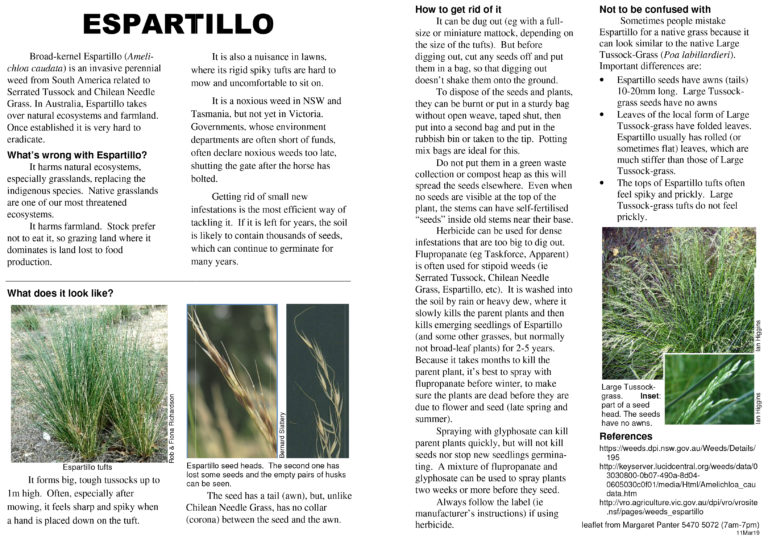A new weed to watch: Espartillo
Posted on 11 September, 2019 by Ivan
Espartillo is an invasive perennial tussock grass that invades pastures, native grasslands and stream banks in temperate climates. Espartillo is unpalatable and has little nutritive value for stock. It has infested pastures, native grasslands, riparian areas and other areas of environmental importance. It is also known to invade lucerne crops.

Espartillo is related to Serrated Tussock and Chilean Needle Grass (photo: Environmental Weeds of Australia)
Found along roadsides and disturbed areas, it can quickly encroach into neighbouring properties and bushland, particularly if there is a lot of bare ground. Once established, espartillo is difficult to manage and control. Native to Argentina, Chile and Uruguay, espartillo is considered a weed in New Zealand, United States of America, Italy and Spain. Even within its native range of Argentina it is a troublesome weed of lucence crops.

Espartillo can tolerate dry and harsh conditions and spreads rapidly (photo: Environmental Weeds of Australia)
Espartillo was first recorded in New South Wales in the 1950s and is present in a few localised areas. The concern with espartillo is that under the right conditions, it may quickly increase its range and density. It is now found throughout the Riverina, western slopes and plains regions of New South Wales. In Victoria, espartillo is mostly located in the central districts of Maryborough, Dunolly and Clunes where it continues to spread.
Local resident Margaret Panter produced an informative pamphlet about this invasive South American weed – see below or click here







Leave a Reply